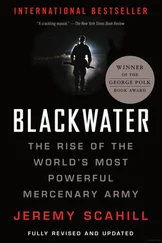To develop new tactics, Rumsfeld and his team looked inward at the very program used to train US forces in how to resist enemy torture. As JSOC reviewed the “failures” of the interrogation program the CIA and DIA were running at Bagram Airfield in Afghanistan, Rumsfeld and his team soon began reviewing the possibility of taking interrogation of enemy combatants captured on the battlefield to the next level. The SERE program, they believed, could be reverse-engineered. The medieval tactics they had studied from history’s greatest torturers would be their new interrogation manual. “We are at war with an enemy that has flagrantly violated the laws of war,” Rumsfeld had declared in late 2001. “They do not wear uniforms. They hide in caves abroad, and among us here at home.” While denouncing the “enemy’s” disregard for the laws of war, Rumsfeld and his team were preparing to follow suit. As early as December 2001, Rumsfeld’s office began asking JPRA for assistance in detainee “exploitation.”
Initially, the leadership at JPRA headquarters pushed back on Rumsfeld’s requests to export their training tactics into the interrogation chambers of the war on terror. In a two-page memo to the Pentagon’s general counsel, JPRA warned against using SERE’s “torture” tactics on enemy prisoners. “The requirement to obtain information from an uncooperative source as quickly as possible—in time to prevent, for example, an impending terrorist attack that could result in loss of life—has been forwarded as a compelling argument for the use of torture…. In essence, physical and/or psychological duress are viewed as an alternative to the more time-consuming conventional interrogation process,” JPRA’s command asserted. “The error inherent in this line of thinking is the assumption that, through torture, the interrogator can extract reliable and accurate intelligence. History and a consideration of human behavior would appear to refute this assumption.” JPRA noted that “upwards of 90 percent of interrogations have been successful” by developing a rapport with the detainee, and warned that after being subjected to harsh interrogation techniques, a prisoner’s resolve to resist cooperation is strengthened. JPRA’s memo noted that eventually, if tortured enough, prisoners “will provide answers that they feel the interrogator is seeking. In this instance, the information is neither reliable nor accurate.”
But Rumsfeld and his team forged ahead. Feith and other Defense officials instructed JPRA to begin providing detailed information on the SERE program to US interrogators. By early 2002, JPRA began briefing DIA personnel on “detainee resistance, techniques, and information on detainee exploitation.” Meanwhile, the senior SERE psychologist, Dr. Bruce Jessen, who was also a CIA contractor, began developing an “exploitation plan” for the Agency’s interrogators to receive instructions on how to use SERE tactics on detainees. In early July 2002, CIA interrogators began receiving training from SERE instructors and psychologists on extreme interrogation tactics. Later that month, Rumsfeld’s office requested documents from JPRA, “including excerpts from SERE instructor lesson plans, a list of physical and psychological pressures used in SERE resistance training, and a memo from a SERE psychologist assessing the long-term psychological effects of SERE resistance training on students and the effects of waterboarding,” according to a Senate Armed Services Committee investigation. “The list of SERE techniques included such methods as sensory deprivation, sleep disruption, stress positions, waterboarding, and slapping. It also made reference to a section of the JPRA instructor manual that discusses ‘coercive pressures,’ such as keeping the lights on at all times, and treating a person like an animal.” The Pentagon’s deputy general counsel for intelligence, Richard Shiffrin, acknowledged that the Pentagon wanted the documents in order to “reverse-engineer” SERE’s knowledge of enemy torture tactics for use against US detainees. He also described how JPRA provided interrogators with documents about “mind-control experiments” used on US prisoners by North Korean agents. “It was real ‘Manchurian Candidate’ stuff,” Shiffrin said. JPRA’s commander also sent the same information to the CIA.
The use of these new techniques was discussed at the National Security Council, including at meetings attended by Rumsfeld and Condoleezza Rice. By the summer of 2002, the War Council legal team, led by Cheney’s consigliere, David Addington, had developed a legal rationale for redefining torture so narrowly that virtually any tactic that did not result in death was fair game. “For an act to constitute torture as defined in [the federal torture statute], it must inflict pain that is difficult to endure. Physical pain amounting to torture must be equivalent in intensity to the pain accompanying serious physical injury, such as organ failure, impairment of bodily function, or even death,” Assistant Attorney General for the Office of Legal Counsel Jay Bybee asserted in what would become an infamous legal memo rationalizing the torture of US prisoners. “For purely mental pain or suffering to amount to torture under [the federal torture statute], it must result in significant psychological harm of significant duration, e.g., lasting for months or even years.” A second memo signed by Bybee gave legal justification for using a specific series of “enhanced interrogation techniques,” including waterboarding. “There was not gonna be any deniability,” said the CIA’s Rodriguez, who was coordinating the interrogation of prisoners at the black sites. “In August of 2002, I felt I had all the authorities that I needed, all the approvals that I needed. The atmosphere in the country was different. Everybody wanted us to save American lives.” He added, “We went to the border of legality. We went to the border, but that was within legal bounds.”
In September 2002, the congressional leadership was briefed on these specific interrogation techniques. Some Democrats, including Representative Nancy Pelosi, would later say that they were never briefed on the use of waterboarding. The CIA briefers and her Republican colleagues claimed otherwise, adding that none of the House and Senate leaders briefed on the method raised any objections to it. Pelosi later clarified that, at the time, she had been briefed on the tactic of waterboarding, but not its active use in interrogations. Whatever the truth, the torture program was now operating at full speed and, as far as the White House was concerned, with the legal backing of the US government. “Instead of co-opting these [al Qaeda] operatives and bringing them to our side, we used SERE methodologies, which are purely enemy methodologies,” recalled Nance. “Taking those and inverting them and then taking them way past the safety margins…completely breaks the moral fiber of anyone who raises their hand in oath to support and defend the constitution of the United States.”
Years after the black sites had been established and scores of prisoners were shuttled through them, the International Committee of the Red Cross compiled testimonials of fourteen prisoners who had survived. Some were snatched in Thailand, others in Dubai or Djibouti. Most were taken in Pakistan. The ICRC report described what would happen once US forces took a prisoner:
The detainee would be photographed, both clothed and naked prior to and again after transfer. A body cavity check (rectal examination) would be carried out and some detainees alleged that a suppository (the type and the effect of such suppositories was unknown by the detainees) was also administered at that moment.
The detainee would be made to wear a diaper and dressed in a tracksuit. Earphones would be placed over his ears, through which music would sometimes be played. He would be blindfolded with at least a cloth tied around the head and black goggles. In addition, some detainees alleged that cotton wool was also taped over their eyes prior to the blindfold and goggles being applied….
Читать дальше












